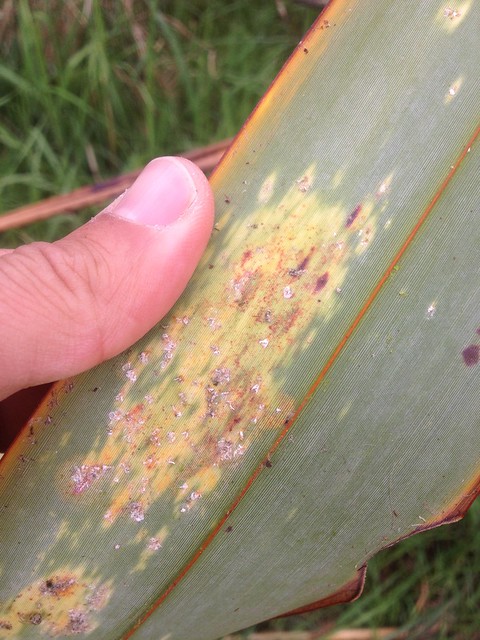RECENT ARTICLES
- CEBRA: An optimised and standardised sampling protocol for BioBlitz
- Stop it people, the plural of anecdote IS data!
- That's no pollinator, that's a flower visitor
- Add a scale to your macro photos
- What to photograph when counting the wild
- Imagine counting the wild on EVERY street in a city!
- My wild counting workflow
- A butterfly flew through
- Why iNaturalist observations without photos can be research grade
- Why you shouldn’t use a spreadsheet for data entry
- All articles ...
Flax scale insects common across Christchurch
An example of a recently described native insect from urban New Zealand that’s risen in abundance due to restoration plantings. The ecological consequences of this rise remain unstudied.
written Mar 30, 2014 • by Jon Sullivan • Category: Wild Changes

For several years I’ve been noticing pale yellow blotches on flax leaves in and around Christchurch. On the undersides of these patches I’d sometimes find small white scale insects. Here’s an example.

It took me a while to identify these. I did so using Rosa Henderson’s Fauna Series of New Zealand volume 66: Diaspididae (Insecta: Hemiptera: Coccoidea). Rosa Henderson was NZ’s scale insect expert and Diaspididae is a big family of armoured scale insects. To quote Rosa’s introduction, “The native (endemic) species are found only on native host plants and none are of economic importance or do any serious damage.” In other words, they’re native species doing natural things.
The species I’ve been seeing on flax was first named by Rosa in her 2011 Fauna Series, as Poliaspis floccosa. It is a species that also gets onto cabbage trees and a few other monocots. Rosa noted that the “incidence of flax scale has increased enormously in urban and native restoration areas through the planting of both the natural forms and cultivars of its host Phormium tenax, where the leaf blades can appear ‘painted’ white with their colonies”.
These city flax plants might well question Rosa’s conclusion that endemic Diaspididae do no serious damage. No ecological study has been done to quantify how much they reduce the vigour and reproductive output of their host plants. Given how abundant these insects are on flax at places like Travis Wetland, I expect there is some impact on some plants.
This is not one of the insects in my core wild counts species list, so I have not been accumulating data to show where it’s found and how it’s changing in abundance. That would be interesting to do though.